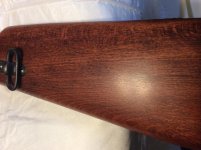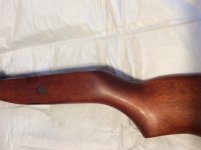Oscar Zulu
Member
I have a couple of older Winchesters that I bought with refinished wood. Probably why they were affordable to me at the time. A model 70 in .300 H and H and a first year 71. The checkering is still there...kind of. I also have another that has spent a lot of time in a scabbard with the finish on the back of the stock thin or missing, however the checkering is intact.
Is there anyone that specializes in both recutting the checkering and refinishing the stocks to a similar finish as they would have come from the factory?
Thanks,
Oscar Zulu
Is there anyone that specializes in both recutting the checkering and refinishing the stocks to a similar finish as they would have come from the factory?
Thanks,
Oscar Zulu




